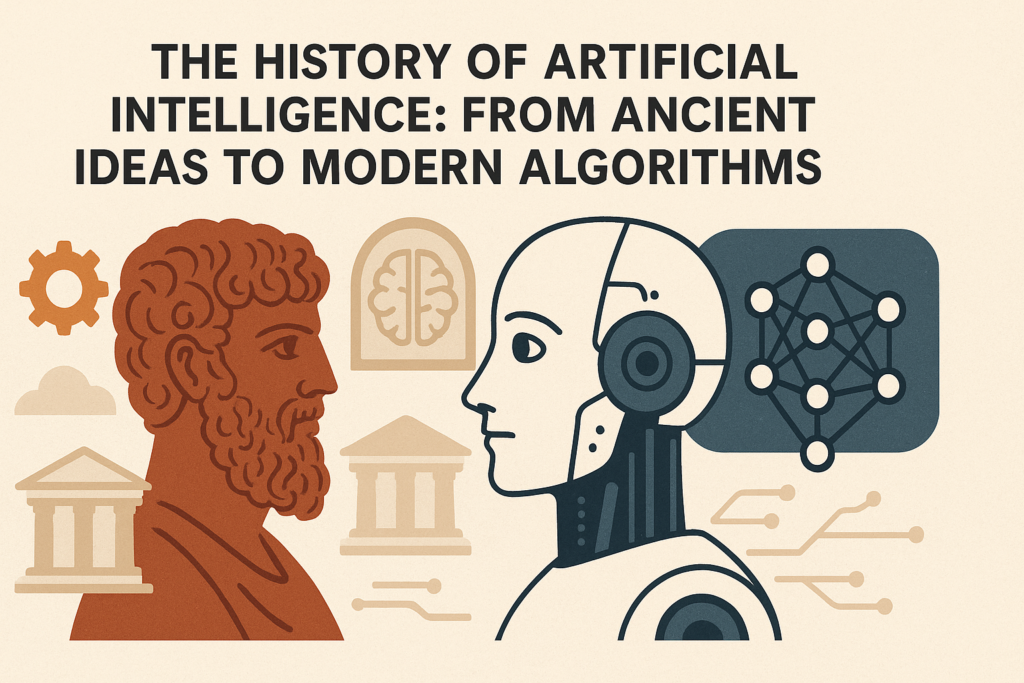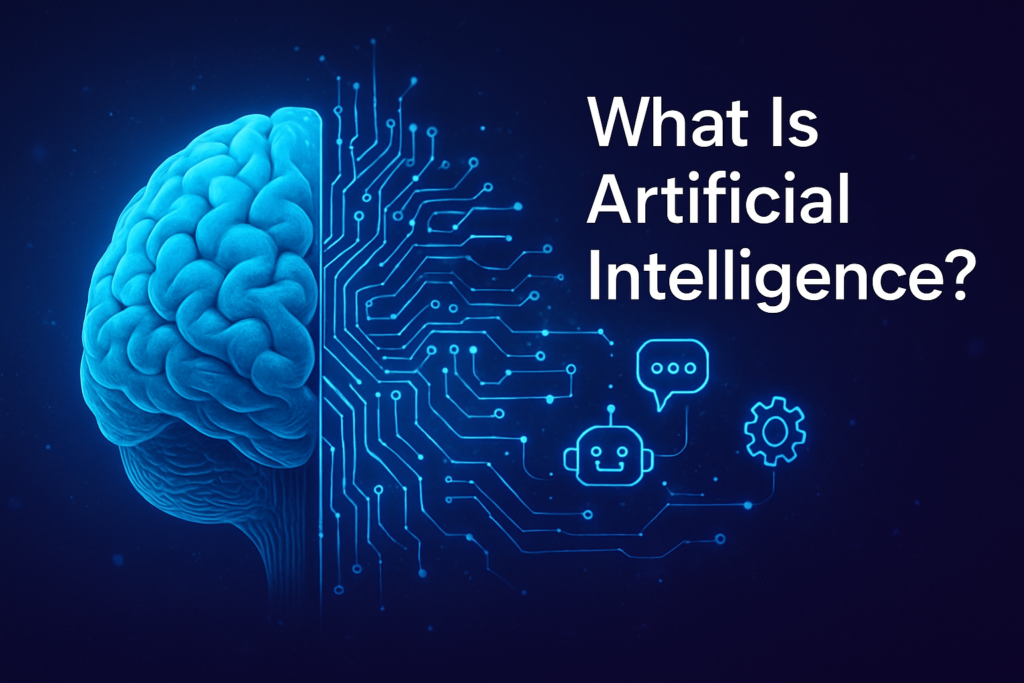Contents
Exploring the Latest Advances in Generative AI Models (GPT-5, Gemini, Claude, and More
Generative Artificial Intelligence (AI) has made significant strides in recent years, particularly in the development of large language models. These models are transforming industries across the globe, from natural language processing (NLP) to creative arts, coding, healthcare, and more. As we look to the future, several next-generation models—such as GPT-5, Gemini, Claude, and others—are setting the stage for a new era of AI capabilities. In this blog, we will explore the latest advancements in generative AI models, how they differ from their predecessors, and their potential implications for both businesses and individuals.
Introduction to Generative AI
Generative AI refers to a class of machine learning models that generate content rather than simply recognizing or classifying it. These models use vast amounts of data to generate human-like text, images, videos, or even music. Popular examples include OpenAI’s GPT models, Google’s Gemini, and Anthropic’s Claude. These AI systems are trained on enormous datasets that allow them to produce coherent and contextually relevant outputs.
In the last few years, generative AI has reached new heights in terms of both scale and sophistication. The latest advancements in these models are characterized by more accurate outputs, deeper contextual understanding, and improved problem-solving abilities, resulting in highly practical applications across industries.
Key Advances in Generative AI Models
GPT-5: The Next Frontier in Natural Language Understanding
OpenAI’s GPT series has been at the forefront of natural language processing for several years. Each iteration has brought improvements in the model’s size, accuracy, and ability to understand and generate contextually relevant text. GPT-5, the anticipated successor to GPT-4, promises to take these capabilities to even greater heights.
Improvements in GPT-5
GPT-5 is expected to be trained on even more diverse and extensive datasets, improving its understanding of various topics and its ability to generate even more nuanced and contextually accurate responses. Some potential improvements include:
- Broader Knowledge Base: GPT-5 will likely incorporate an even wider range of sources to deepen its knowledge and improve its responses to questions that require specialized knowledge.
- Better Long-Form Content Generation: While GPT-4 is highly effective at generating short-form content like blog posts and articles, GPT-5 will likely take the next step in generating more coherent and engaging long-form content, including eBooks and complex reports.
- Improved Multimodal Abilities: Although GPT-4 has introduced multimodal capabilities (e.g., processing both images and text), GPT-5 may improve on this by better integrating text, images, and perhaps even audio, offering richer generative capabilities.
- Advanced Common-Sense Reasoning: One of the limitations of GPT-4 and earlier models is the occasional lack of common-sense reasoning. GPT-5 is expected to improve in this area, offering more logically consistent answers that mirror human intuition.
2.2. Gemini: Google’s Cutting-Edge AI Model
Google’s Gemini models, a family of generative AI systems, have been developed to tackle a range of applications, from natural language processing to image generation. The release of Gemini 1 and subsequent updates has positioned it as a serious competitor to OpenAI’s GPT models.
Features of Gemini
- AI for Search and Beyond: Google’s Gemini models are expected to play a critical role in the future of search, revolutionizing how users interact with information on the web. By integrating advanced NLP and multimodal capabilities, Gemini can generate highly relevant search results and provide users with instant answers in a conversational format.
- Integration with Google Ecosystem: Unlike GPT-4, which remains somewhat isolated from the broader ecosystem, Gemini models are closely tied to Google’s suite of tools (such as Google Search, Google Assistant, and YouTube). This integration makes Gemini uniquely positioned to enhance user experiences across various Google platforms.
- Revolutionizing Content Creation: Like GPT-5, Gemini’s multimodal capabilities can potentially take content creation to the next level. Whether it’s writing, image generation, or video creation, Gemini aims to provide a seamless and integrated experience that allows creators to generate high-quality, contextually aware content.
2.3. Claude: Anthropic’s Groundbreaking AI
Anthropic, a leading AI research company, has introduced the Claude family of models. These AI systems are designed to prioritize safety and alignment, addressing concerns regarding the ethical implications of generative AI.
Claude’s Key Features
- Ethical AI Focus: One of Claude’s most significant innovations is its focus on developing AI that aligns with human values and avoids harmful or unethical behavior. Claude uses advanced techniques for reinforcement learning with human feedback (RLHF) to ensure that the outputs of the model are not only accurate but also socially responsible and safe.
- Natural Conversation Flow: Like GPT-4 and Gemini, Claude is designed to carry out complex conversational exchanges. However, its emphasis on human-like, empathetic responses has made it a standout in areas like customer service, therapy, and educational tutoring.
- Content Moderation: Claude’s ability to filter out harmful content has been a key feature. This allows businesses to implement it more widely without worrying about unintended or inappropriate outputs.
2.4. Other Notable Models: PaLM, LLaMA, and More
While GPT-5, Gemini, and Claude are some of the leading models, the field of generative AI also includes a range of other powerful models. For instance:
- PaLM (Pathways Language Model): Developed by Google, PaLM is a powerful model designed to perform a variety of tasks, from language translation to question answering and summarization.
- LLaMA (Large Language Model Meta AI): Meta’s LLaMA models have focused on scaling AI in a way that balances performance with efficiency. This makes LLaMA a favorite for research and development purposes.
Each of these models is designed with a slightly different emphasis, whether it be ethical safety (Claude), broader multimodal capabilities (GPT-5 and Gemini), or improving efficiency and scalability (LLaMA).
Use Cases and Applications of Generative AI Models
The latest generative AI models are having a profound impact on various industries, helping organizations solve complex problems, improve efficiency, and unlock new creative possibilities.
Content Creation and Marketing
Generative AI has revolutionized content creation, providing businesses with tools to produce blog posts, social media content, and advertisements at scale. These models can now generate human-like copy that resonates with audiences and can be tailored to different demographics.
For example, GPT-5 and Gemini can help content marketers by generating SEO-friendly articles, social media posts, and email campaigns in a fraction of the time it would take a human writer. Moreover, AI-driven content strategies are becoming increasingly personalized, with AI able to analyze customer behavior and craft messages that resonate with individual preferences.
Customer Support and Service
AI-driven customer support systems, powered by models like Claude, are becoming more adept at handling complex customer queries, troubleshooting technical issues, and providing personalized solutions. These systems offer 24/7 support, freeing up human resources for higher-level tasks.
For instance, AI can now simulate empathetic conversations, which makes it more effective in sensitive areas such as mental health counseling or financial advice. Claude’s focus on safety and ethical behavior ensures that these models provide reliable and responsible advice.
Healthcare and Life Sciences
Generative AI is also making its mark in the healthcare industry. Models like GPT-5 can assist in diagnosing diseases by analyzing medical texts, academic papers, and clinical reports. Additionally, these models are helping medical researchers discover novel drugs or predict patient outcomes based on historical data.
AI-powered content generation can also assist in medical education by creating personalized learning materials. By generating medical texts tailored to a student’s current level of understanding, AI can provide a more personalized and effective educational experience.
Creative Industries
Generative AI models are not just limited to text—they can create music, art, and even entire films. These capabilities open up new creative possibilities for artists and content creators. GPT-5 and Gemini, for example, could assist musicians in composing original music or create highly detailed artwork using AI-generated prompts.
Similarly, film production studios can leverage these AI models to draft scripts or generate realistic CGI (computer-generated imagery). The integration of generative AI with creative industries is expected to bring about a significant transformation in how art is created and consumed.
Ethical Considerations and Future Outlook
As with any rapidly evolving technology, generative AI raises ethical concerns. The most pressing of these include issues related to bias, misinformation, privacy, and the potential for job displacement. While developers are continuously working to improve the safety and fairness of these models, the responsibility to use these technologies ethically rests with society as a whole.
Despite these concerns, the future of generative AI looks promising. As these models continue to improve in accuracy, safety, and versatility, their impact will be felt across all sectors, from healthcare and finance to entertainment and education.
Conclusion
Generative AI models like GPT-5, Gemini, and Claude are ushering in a new era of intelligent systems capable of producing human-like content at an unprecedented scale. These models are not only enhancing business operations but also transforming creative fields, healthcare, and customer service. As the technology continues to evolve, we can expect even more groundbreaking advancements that will reshape industries, improve efficiency, and create new opportunities for innovation.
However, as we push the boundaries of AI, it is essential to consider the ethical and societal implications of these advancements. By developing responsible, safe, and transparent AI systems, we can harness the full potential of generative AI while mitigating its risks.
The future of generative AI is bright, and with models like GPT-5, Gemini, and Claude leading the charge, we are on the cusp of a new age of AI-driven innovation.


